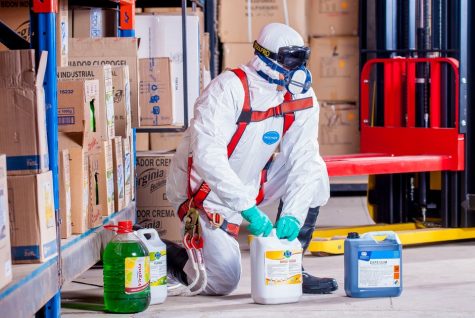A Beginner’s Guide to Xylene: Uses and Safety Tips

Most adhesives and coatings contain xylene, a colorless solvent. This compound is widely used in the petroleum industry and has a wide range of applications. On the negative side, it’s highly flammable and represents an occupational hazard.
Xylene may cause severe organ damage if handled inappropriately. It’s particularly toxic for the liver, kidneys, and central nervous system, but it can also affect the skin and eyes. Moreover, it can leak into the soil where it may remain for weeks or even months.
Painters, lab technicians, and other professionals work with this chemical on a daily basis. Xylene uses include everything from the manufacturing of dyes and motor fuels to pharmaceuticals. However, its hazards shouldn’t be ignored.
Like methanol, sulfuric acid, and other compounds, xylene is prized for its physical and properties. Just make sure you know how to handle it safely.
What Is Xylene?
Xylene is an aromatic hydrocarbon with the chemical formula C8H10. Generally, it’s sold as a colorless liquid with a sweet odor. It’s also known as dimethylbenzene or xylol.
Most manufacturers use this synthetic compound as a solvent for paint, lubricants, sealants, and other goods. Xylene is one of the few chemicals that don’t mix with water. Unfortunately, it’s extremely toxic for the environment and human health.
A recent study indicates that xylene is commonly found in the soil, water, and air. Although this compound is insoluble in water, it pollutes the marine environment.
Xylene Uses and Industrial Applications
Xylene uses were discovered by Auguste Cahours, a French chemist, in 1850. Today, this substance has various applications in chemistry and dentistry, as well as in the rubber, leather, and printing industries.
Dentists, for example, use it for tissue processing and endodontic treatments. Lab technicians use xylene to remove paraffin and synthetic immersion oil from microscope slides.
The primary application of xylene is as a solvent. This compound can also be added to feedstock, gasoline, aviation fuel, and other industrial products. In some industries, it’s used as a paint thinner and cleaning agent.
Health Hazards of Xylene
Despite its wide range of uses, xylene poses major health hazards. Since it’s flammable at room temperature, it can easily cause a fire. Plus, it’s toxic to humans through all routes of exposure.
If inhaled, xylene vapors can depress the central nervous system. Symptoms include nausea and vomiting, dizziness, irritability, and headache.
Dermal exposure may cause dermatitis and skin irritation. Over time, this chemical may cause the skin to crack and peel.
Xylene ingestion may result in liver or kidney damage and acute systemic toxicity. In some cases, it may cause respiratory depression, fluid buildup in the lungs, or even coma.
Researchers don’t fully understand its side effects. The general consensus is that xylene affects the neural proteins, causing damage to the central nervous system.
The best thing you can do to protect your staff is to ensure adequate training. Provide them with safety data sheets, as well as gloves, respirators, and splash goggles. Store this compound in a secure area away from oxidizing acids and other incompatible materials.
Protect Your Staff from the Toxic Effects of Xylene
As an employer, it’s your responsibility to protect your staff from the hazards of xylene. Make sure they know what to do in case of direct contact with this substance and how to handle it in a safe manner.
Whether you want to learn more about xylene uses or increase safety in the workplace, we’re here to help. Our safety data sheet management solutions include a free demo, so go ahead and try it today!
